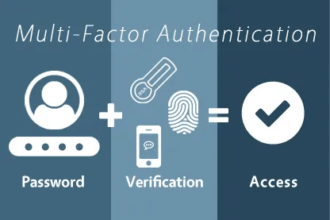Introduction to Semantic Errors Chapter 79
Welcome to the intriguing world of semantic error chapter 79 in programming! If you’ve ever been baffled by mysterious bugs that seem to lurk undetected in your code, then this blog post is for you. In Chapter 79, we delve into the intricate realm of semantic errors and explore how they can trip up even the most seasoned developers. So buckle up as we unravel the mysteries behind these sneaky bugs and equip you with the knowledge to conquer them once and for all. Let’s dive in!
Understanding the Types of Semantic Error Chapter 79
Semantic error chapter 79 in programming can be tricky to identify and rectify. Understanding the types of semantic errors is crucial for any developer aiming to write efficient code. One common type of semantic error involves mismatched data types, where variables are used in a way that doesn’t align with their intended purpose. This can lead to unexpected behavior and bugs in the code.
Another type of semantic error pertains to logic flaws, where the program may execute without throwing syntax errors but produces incorrect results due to flawed reasoning. These errors often require careful scrutiny and testing to uncover.
Additionally, scope-related issues can fall under semantic error chapter 79 when variables are accessed outside of their designated scope or context, causing unintended consequences within the program’s execution flow. Being mindful of these nuances helps programmers anticipate potential pitfalls and write more robust code overall.
Common Causes of Semantic Error Chapter 79
Semantic errors in programming can be caused by various factors, making them a common challenge for developers. One of the main causes is misunderstanding the intended meaning of code due to ambiguous or unclear instructions. This lack of clarity can lead to misinterpretations and ultimately result in semantic errors.
Another common cause is inconsistent variable usage within the code. When variables are not properly defined or their values are mistakenly assigned, it can create confusion and trigger semantic issues during execution. Furthermore, incorrect data type conversions can also contribute to semantic errors.
Moreover, overlooking logical flaws in the code structure can introduce semantic error chapter 79. Failure to consider all possible scenarios and outcomes may lead to unexpected behaviors that manifest as semantic issues. Additionally, inadequate documentation or comments within the codebase can make it challenging for programmers to understand the logic behind certain functions or procedures accurately.
To avoid these common causes of semantic errors, programmers should strive for clear and concise coding practices, maintain consistent variable naming conventions, double-check data type conversions, thoroughly test all logical conditions, and ensure comprehensive documentation throughout the development process.
Examples of Semantic Errors in Programming
Semantic errors in programming can be tricky to spot but have significant consequences. For example, assigning a value of type string to a variable expecting an integer can lead to unexpected outcomes. Similarly, mixing up the order of operations in mathematical calculations can result in inaccurate results due to semantic errors.
Another common example is using variables before they are declared or initialized properly within the code. This can cause confusion and errors during execution. Additionally, neglecting proper data type conversions when performing operations on different types of data can lead to semantic issues that affect the program’s functionality.
Furthermore, forgetting semicolons at the end of statements or using incorrect syntax for conditional statements are classic examples of semantic errors programmers encounter regularly. These seemingly small mistakes can have a big impact on the overall performance and reliability of a program if not identified and rectified promptly.
Techniques for Identifying and Fixing Semantic Errors
When it comes to identifying and fixing semantic errors in programming, there are several techniques that can help streamline the debugging process. One effective approach is to carefully review the code line by line, paying close attention to any inconsistencies in variable usage or data types.
Another helpful technique is utilizing debugging tools provided by integrated development environments (IDEs) which can pinpoint specific areas of code where semantic error chapter 79 may be lurking. Additionally, conducting thorough testing with different inputs can reveal hidden issues that might not be immediately apparent.
Collaborating with peers or seeking guidance from online forums can also provide fresh perspectives on how to tackle tricky semantic errors effectively. It’s important to remain patient and persistent when troubleshooting these types of errors as they often require meticulous problem-solving skills and attention to detail.
By combining these various techniques, programmers can enhance their ability to identify and resolve semantic errors efficiently, ensuring smoother execution of their code.
The Importance of Debugging and Testing for Semantic Errors
Debugging and testing are crucial steps in the development process to identify and rectify semantic errors effectively. By meticulously examining the code, developers can uncover hidden mistakes that may not be apparent during initial coding. Testing allows for the validation of the program’s functionality under different scenarios, helping to catch any inconsistencies or unexpected behaviors.
Through debugging, programmers can trace the root cause of semantic error chapter 79 by stepping through the code line by line. This meticulous approach aids in understanding how data flows within the program and where logical flaws may exist. By conducting thorough tests, developers ensure that their software performs as intended across various inputs and conditions.
Finding and fixing semantic errors early on saves time and resources in the long run. It enhances the overall quality of the software product, reducing potential risks of malfunctions or bugs down the line. Debugging and testing go hand in hand to deliver robust, reliable software solutions that meet user expectations efficiently.
Conclusion: How to Avoid and Handle Semantic Errors Effectively
Semantic errors in programming can be challenging to detect and resolve, but with the right approach, they can be effectively managed. By understanding the types of semantic error chapter 79, their common causes, and utilizing techniques for identification and fixing, developers can minimize the occurrence of these issues in their code. Debugging and testing play a crucial role in ensuring that semantic errors are caught early on in the development process.
To avoid semantic errors effectively, programmers should focus on writing clean and well-structured code, using meaningful variable names, comments for clarity, and following best practices. Regular testing through unit tests, integration tests, and system tests can help uncover any hidden semantic errors before deployment.
Handling semantic error chapter 79 requires patience, attention to detail when analyzing code behavior or error messages. It also involves leveraging tools like IDEs (Integrated Development Environments) or static analysis tools for additional support in detecting potential issues proactively.
By adopting a proactive approach towards identifying and addressing semantic errors throughout the software development lifecycle – from coding to testing to deployment – developers can create more reliable and robust applications that deliver better user experiences. Remember – prevention is always better than cure when it comes to dealing with semantic error chapter 79.







